THE ROMA IMAGE GALLERY
|
Here is a small gallery of images related to people and events in
ROMA: The Novel of Ancient Rome by Steven Saylor.
Some images will enlarge when you click on them.
To see some of the books Steven encountered in his research,
visit the Roma Bookshop.
|
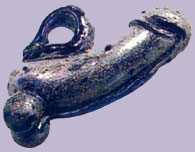 |
| Here it is: the famous Fascinum that looms so large throughout Roma. (Well, not the Fascinum, since this wingless example from Meaux, near Paris, is made of molten glass and dates from the First Century A.D.) Such charms were as common as dirt for hundreds of years, yet you almost never see them in museums. I wonder why? At the British Museum in London, they display a mere handful of examples...but I’ll bet you they own hundreds, maybe even thousands of them! |
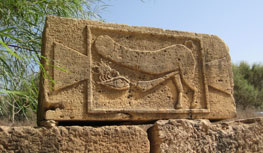 |
| Another Fascinum image, this two-legged permutation from Leptis Magna in modern-day Libya. Warding off the Evil Eye? (Click on image above to see it larger.) |
 |
The Spanish edition of Roma from publisher La Esfera de les Libros features an endpaper map
in beautfiul color. (Click on image above to see the map full-size.) |
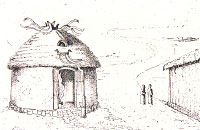 •• •• 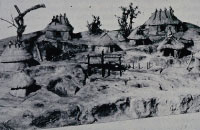 |
The early Romans lived in huts that looked something like this.
The Hut of Romulus was preserved as a shrine on the Palatine Hill for hundreds of years.
(Click on images to see larger versions.) |
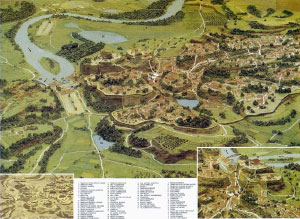 |
Here’s a bird’s-eye view of what Rome may have looked like in the early days of the Republic.
This way cool map is called Roma Arcaica, a publication of the Museo della Civilità Romana.
Copies are available from the American Classical League. (Click on image to see a larger version.) |
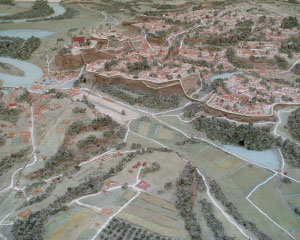 |
Another cool aerial view of early Rome; this is the model in the Museo della Civilità Romana.
(Click on image to see a larger version.) |
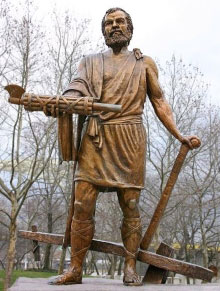 |
Resigning his office, the dictator Cincinnatus relinquishes the fasces and returns to his plow.
This is a modern statue in the city of Cincinnati, Ohio |
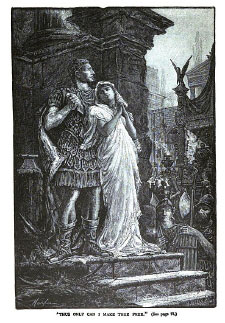 |
The tragic tale of Verginia, as depicted in a quaint etching from an old history book.
(Click on image to see a larger version.) |
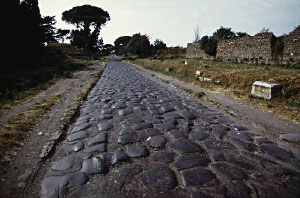 |
The Appian Way, brainchild of Appius Claudius Caecus, is still intact.
(Click on image to see a larger version.) |
|
|
| From the National Gallery in London, this is “The Introduction of the Cult of Cybele at Rome” by Andrea Mantegna (1506). In 204 BC, the Romans imported the cult of Cybele from Pessina in Asia Minor. A priest wearing a Phrygian cap (and with a beard, though the galli were eunuchs!) carries an altar bearing a bust of Cybele and her sacred stone, which fell from the sky. Scipio Africanus (just right of center, gesturing with his right hand) received the goddess. You can examine this image in minute detail at this page of the National Gallery site. |
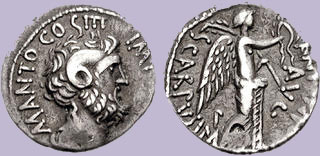 |
This is an example of the coin mentioned on page 544 of Roma,
a silver denarius minted in Cyrene by Lucius Pinarius (Scarpus) for Marc Antony. |
|
|